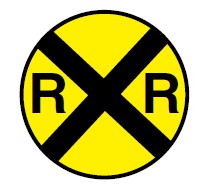Understanding traffic signs is crucial for safe and efficient driving. Among the various types of signs, guide signs play a vital role in providing drivers with essential information about their route, destinations, and points of interest. This guide will delve into the details of What Are Guide Signs In Driving, their purpose, types, and how to interpret them effectively.
Understanding Traffic Signals
Traffic signals are visual cues that regulate the flow of traffic at intersections. They are designed to ensure the safe and orderly movement of vehicles, pedestrians, and bicyclists.
Interpreting Light Signals
-
Solid Red Light: Stop before the stop line or crosswalk. Right turns are permitted unless a “NO TURN ON RED” sign is present, after yielding to pedestrians and traffic.
Alt Text: A solid red arrow traffic signal indicating drivers must stop and cannot turn in the direction of the arrow.
-
Red Arrow: Stop. Turning in the direction of the arrow is prohibited until a green light or green arrow appears.
-
Flashing Red Light: Stop, then proceed when safe after yielding the right-of-way.
-
Solid Yellow Light: Caution. Prepare to stop if it is safe to do so. If stopping is unsafe, proceed cautiously through the intersection.
Alt Text: A solid yellow traffic signal indicating drivers should prepare to stop if safe.
-
Yellow Arrow: The protected turning time is ending. If you cannot stop safely, cautiously complete your turn.
-
Flashing Yellow Light: Proceed with caution. Slow down and be alert, but stopping is not required.
Alt Text: A flashing yellow traffic signal indicating drivers should proceed with caution.
-
Flashing Yellow Arrow: You may turn, but your turn is not protected. Yield to oncoming traffic and proceed with caution.
-
Solid Green Light: Go, but yield to any vehicles, bicyclists, or pedestrians already in the intersection.
Alt Text: A solid green traffic signal indicating drivers can proceed.
-
Green Arrow: Go in the direction of the arrow. Oncoming traffic is stopped.
Handling Malfunctioning Traffic Lights
Treat a non-working traffic light as a four-way stop, yielding the right-of-way as necessary.
Understanding Pedestrian Signals and Signs
Pedestrian signals and signs are designed to ensure the safety of pedestrians crossing roadways. Understanding these signals is crucial for both drivers and pedestrians.
Interpreting Pedestrian Signals
-
WALK or Walking Person: Pedestrians may cross the street.
Alt Text: A pedestrian walk signal showing a white figure of a person walking indicating it is safe to cross the street.
-
Don’t Walk or Raised Hand: Pedestrians may not begin crossing the street.
-
Flashing Don’t Walk or Flashing Raised Hand: Do not start crossing; the signal is about to change. Drivers must yield to pedestrians.
-
Numbers: Indicates the remaining seconds to cross the street.
Additional Pedestrian Signals
-
Diagonal Crossing: Allows pedestrians to cross the intersection diagonally. Cross only when the walk signal allows it.
Alt Text: A sign indicating diagonal crossing is permitted, showing pedestrians can cross the intersection in any direction.
-
Sounds: Audible signals for visually impaired pedestrians.
-
Pedestrian Push Button: Activates the walk signal.
-
No Pedestrian Signals: Obey vehicle traffic signals.
Regulatory and Warning Signs: Maintaining Order and Awareness
Understanding Regulatory Signs
Regulatory signs are vital for informing drivers of traffic laws and regulations.
-
STOP Sign: A full stop is required before entering the crosswalk or limit line.
-
YIELD Sign: Slow down and yield to other traffic, bicyclists, or pedestrians.
Alt Text: A red and white yield sign indicating drivers must give way to other traffic.
-
Red and White Regulatory Sign: Obey the sign’s instructions, such as “DO NOT ENTER.”
-
WRONG WAY Sign: Indicates you are traveling against traffic.
Alt Text: A red and white “Wrong Way” sign, warning drivers they are traveling in the wrong direction.
-
Red Circle with a Red Line: Indicates a prohibited action.
Understanding Warning Signs
Warning signs alert drivers to potential hazards or changes in road conditions ahead.
-
Yellow and Black Circular or X-shaped Sign: Indicates an upcoming railroad crossing.
-
5-Sided Sign: Indicates a school zone.
Alt Text: A five-sided yellow school zone sign, alerting drivers to the proximity of a school.
-
Diamond-shaped Sign: Warns of specific road conditions or dangers.
-
White Rectangular Sign: Communicates important rules and regulations.
What are Guide Signs? Definition and Purpose
Guide signs are essential road signs that provide directional information to drivers. Unlike regulatory signs, which enforce traffic laws, or warning signs, which alert drivers to potential hazards, guide signs assist drivers in navigating roads and reaching their desired destinations.
The primary purposes of guide signs are:
- Providing directional information: They indicate the direction to cities, towns, and other destinations.
- Identifying routes: They display route numbers (e.g., Interstate, U.S., state routes).
- Showing distances: They indicate the distance to upcoming destinations.
- Highlighting points of interest: They may mark locations of parks, historical sites, airports, and other attractions.
- Offering general information: Some guide signs provide information about services available, such as gas, food, and lodging.
Types of Guide Signs
Guide signs come in various shapes, sizes, and colors, each serving a specific purpose:
- Destination Signs: These signs are typically green with white lettering and provide directions to cities, towns, or specific locations. They often include route numbers and distances.
- Route Markers: These signs identify the type and number of a particular route. They vary in design depending on the type of route (e.g., Interstate, U.S., state).
- Street Name Signs: Usually blue or green, these signs display the name of the street at intersections.
- Service Signs: These signs are typically blue with white symbols or lettering and indicate the availability of services such as gas, food, lodging, or hospitals.
- Recreational and Cultural Interest Area Signs: These signs are often brown and indicate the location of parks, historical sites, museums, and other recreational or cultural attractions.
Interpreting Guide Signs Effectively
To effectively use guide signs, consider these tips:
- Pay Attention: Be observant and scan the roadside for guide signs as you drive.
- Plan Ahead: Before starting your trip, familiarize yourself with the route and look for key destinations or landmarks along the way.
- Understand Route Numbers: Learn the numbering system for interstates, U.S. routes, and state routes in your area.
- Use Context: Consider the context of the sign. For example, a sign indicating “Airport” might include a symbol of an airplane.
- Stay Updated: Road conditions and routes can change, so be aware of any updates or detours.
Conclusion
Guide signs are essential tools for drivers, providing critical information for navigation and route planning. By understanding the different types of guide signs and how to interpret them effectively, drivers can enhance their safety, efficiency, and overall driving experience. Always pay attention to these signs and use them to your advantage while on the road.
Alt Text: Examples of various traffic signs including regulatory, warning, and guide signs.


